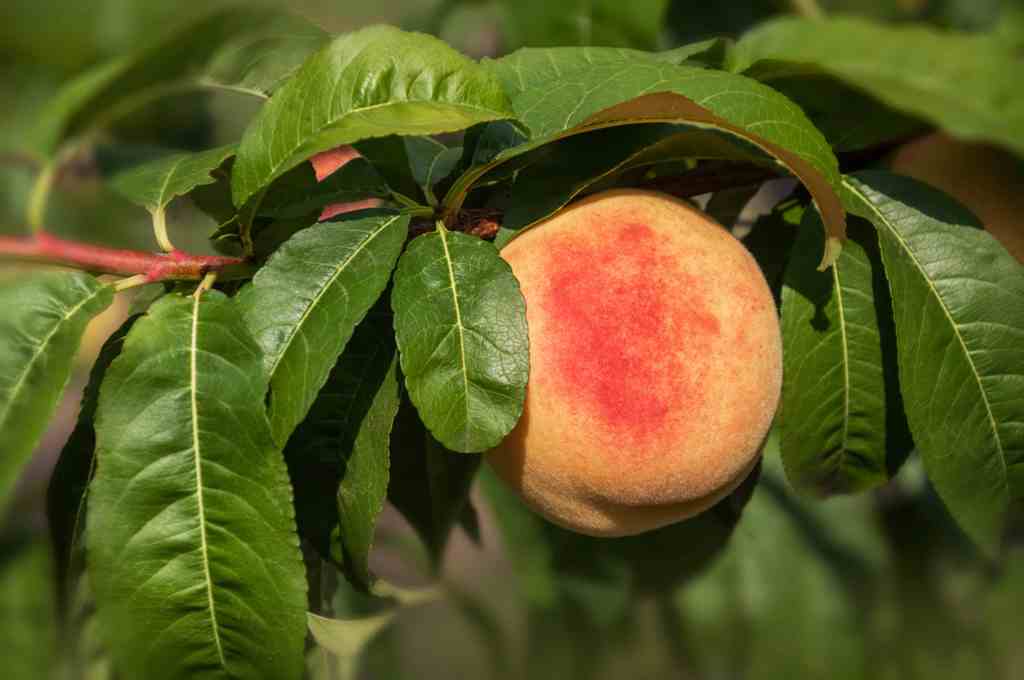How to Grow and Care for Nectarines Fruit Tree

The Nectarines are beautiful fruits with a smooth and glossy looking bright colored peel. It is related to peaches and belongs to the Rosaceae family. The scientific name of Nectarines is Prunus Persica. These fruit trees are native to China and have been around for centuries. It does not have as many plant hairs as the peach family usually does. Nectarines have various health benefits as they are full of Vitamin A and Vitamin C. The peel of the Nectarines is usually seen to be red. However, it can be a combination of red and yellow and also white at times. Nectarines are widely enjoyed for their delicious taste. They can be eaten as the main thing and not as an ingredient; however, they are also appreciated as Jams and other sweet dishes. Nectarines can reach a height of 16 feet to the maximum.
Suitable Conditions

When Nectarine trees are to be planted, it is to be made sure that they are provided with the conditions and the location which would suit it best, or the growth of the tree will be hampered. For the location, it is recommended that Nectarines are planted in a place where they can be sheltered from the wind in case the conditions go extreme. The preferable time to plant Nectarines is during fall or spring as the climatic conditions are the most suitable at that time. A salient feature of Nectarines is that even though it does not prefer the climate to go extreme and grows best in warm weather, it can tolerate a drop in temperature down to -15 to -20C as well. Nectarines do best in zones ranging between 5-9.
Preference for Light and Water
For Nectarines to thrive best and give out maximum crops, it is highly preferred by the plant to be grown in areas providing complete sunlight. Providing at least 6-7 hours of direct sunlight per day is essential for the best growth of Nectarine trees. Nectarines do well even if they receive southern exposure of sunlight if there is no other choice. It is recommended that the Nectarines should not be grown in the shade even though it can tolerate light shade. This is because the shade can hamper the growth of the trees and result in lesser fruits. Shade also makes the plant more prone to diseases. For watering requirements of the Nectarines, it is necessary to keep the soil moist by watering the plant every 10 days. However, it is to be ensured that the plant is not overwatered as waterlogged soil can adversely affect its health.
Soil and Feeding Requirements

Nectarine trees have been observed to show the best growth when they are kept in the soil of their preference. Nectarines prefer the soil to be slightly acidic. The pH level of the soil should fall between 6.0 and 6.5. The soils should be well-drained and should also be full of nutrition. Light and loamy soils suit the Nectarines best. They can, however, also thrive in droughts to some extent. Care should be given to make sure that Nectarines are not in waterlogged soils as the roots may rot. Nectarines should be fed with nitrogen fertilizers during summers. An organic mulch of 3-4 inches should also be used.
Problems with Nectarines
Like various other plants belonging to the peach family, Nectarines, too, are attracted by various pests and diseases. The several pests that are likely to attack Nectarines include twig borers, spider mites, western flower thrips, and others. The diseases that affect Nectarines are Bacterial spots and Bacterial canker. These diseases cause various damages to the plant, and it is essential to get rid of all such problems as soon as possible to save the tree and its fruits.
To know if the fruit is properly ripe or if the fruit is bad, the softness of the Nectarines helps. If the Nectarines are very soft, it is a sign that the fruit is bad. When the Nectarines start to show dark spots, it is also a sign that the fruit is starting to rot. Nectarines also give out a bad smell under such conditions.
Yes, Nectarines can be stored in the fridge for about 2-3 days until they are completely dry. Nectarines, however, do not have a long shelf life as they will rot.
Yes, the skin of Nectarines is edible once the fruit is completely ripe. However, it is preferred by many after peeling it. The reason why they are peeled as the texture and the taste of the skin is not very pleasing.





